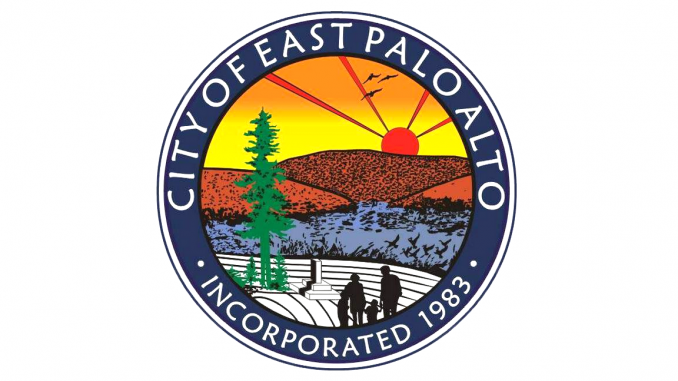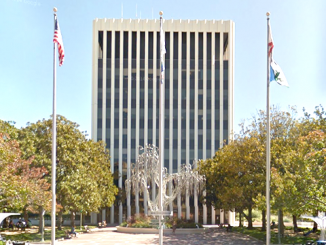
BY ELAINE GOODMAN
Daily Post Correspondent
Increases in property tax revenue and investment earnings helped the city of East Palo Alto post a surplus of $15.6 million for the 2019 fiscal year, according to a new financial report.
Property tax, which makes up 39% of the revenue for the city’s governmental activities, grew by $1.8 million in the fiscal year, reaching $16.41 million. The growth was partly due to a reassessment of the University Plaza office building and the Four Seasons Hotel, resulting in an increase in property tax payments.
East Palo Alto’s investment income rose to $2.03 million compared to $849,716 in the previous fiscal year.
And while expenses also grew during the 2019 fiscal year, the increase wasn’t as much as expected, due in part to staff vacancies. The report notes that expenses are increasing in certain areas.
“The city experienced generally increased service costs related to addressing homelessness and housing issues,” said the report, known as the Comprehensive Annual Financial Report, or CAFR. The report is for fiscal year 2019, which ended on June 30.
The City Council will vote tomorrow on whether to accept the financial report. The council has also received financial reports on Measure A and Measure C, which raised money for transportation projects and crime-fighting efforts, respectively.
The $15.6 million surplus is the difference between revenue and expenses for the year. It consists of a $14.6 million surplus from governmental activities and $1.0 million from business-type activities, which include the city’s water system and trash collection services.
Winning streak
East Palo Alto has posted a surplus in each fiscal year from 2011 to 2019. The 2019 surplus of $15.6 million is a decrease from the $17.2 million surplus in the 2018 fiscal year, but an increase from $14.8 million in 2017.
The string of surpluses is in contrast to fiscal year 2010, when the city had an overall budget deficit of $1.88 million.
Other cities have reported surpluses for 2019, including the city of Palo Alto’s $76 million surplus and a $118 million surplus in Mountain View.
An annual surplus adds to a city’s “net position,” the difference between assets and liabilities. The 2019 surplus brings East Palo Alto’s net position to $154 million.
Not all of the net position is readily available to be spent for any purpose. Of the total net position, $66.2 million represents investment in capital assets. Another $43.8 million has restrictions on its uses, while $43.9 million is unrestricted.
Preventing flooding
The positive financial results in 2019 allowed East Palo Alto to transfer about $6.6 million from its general fund to the Capital Improvement Fund, where it will be used as matching money for two grants that were awarded last year.
About $1.1 million of the transferred money will serve as matching funds for a $4.4 million federal grant for the Ravenswood-Bay Road storm water infrastructure project.
And $5.5 million will be matching funds for a $17.3 million grant from the California Office of Emergency Services for a levee system to prevent flooding.
The council also received reports on Measure A and Measure C funds for the 2019 fiscal year.
Measure A is a San Mateo County sales tax for transportation projects. In 2004, voters extended the half-cent sales tax for 25 years.
The report shows that East Palo Alto received $657,197 in Measure A funds, plus $83,553 in interest income, for a total of $704,750. Of that, $208,560 was spent on the Highway 101 pedestrian-bicycle bridge plus management costs. That leaves $532,190 in Measure A funds.
Crime-fighting tax
Measure C was a city parcel tax that voters approved in November 2006 to fund crime-fighting efforts in East Palo Alto. The tax was for a 10-year period ending June 30, 2017.
The city ended fiscal year 2019 with $592,734 in Measure C funds, according to the report. Of that, $562,319 is earmarked for violence prevention programs and $30,415 is for public safety programs.




How about a sound wall on University from Kavanaugh to Bay road so everyone that comes off the bridge doesn’t think we ar.e a dilapidated city. Everyone waiting in traffic looks right and left and sees a quarter mile of 3rd world fencing
Dear Dan
I’m pretty sure you are new to East Palo Alto. If the fences bother you so much then maybe you should help thy neighbor to repair their fences. The people who have lived in those homes for years or even decades with the 3rd world fences are more concerned about keeping their homes. If the city want to help the residents maybe they should fill in the potholes or maybe just maybe give put some sidewalks along Lincoln St or Dumbarton St or on Palo Verde. So you see Dan there are other things to worry about then what people coming off the freeway are looking at. If you don’t like what you see then close your eyes or move to another city with more appealing fences.
Building a wall along that stretch would definitely improve the appearance of our city and the back yards of these homes would feel safer. It is definitely one of many great ideas to beautify our city for us, the residents. I could care less what “East Bay” commuters think as they sit in their cars day after day.
How about just finishing the sidewalks to residential streets. I’ve been living here since 1961 in the same house with no sidewalks. When it rains the street floods. There’s very large puddles in front of our homes.
I really feel bad for the children going to EPA charter school they have to walk in the middle of the street. Also we need speed bumps on Runnymede street.
People fly down the street trying to get their kids to school on time, this includes
some of the staff at EPA charter school trying to get to work on time.